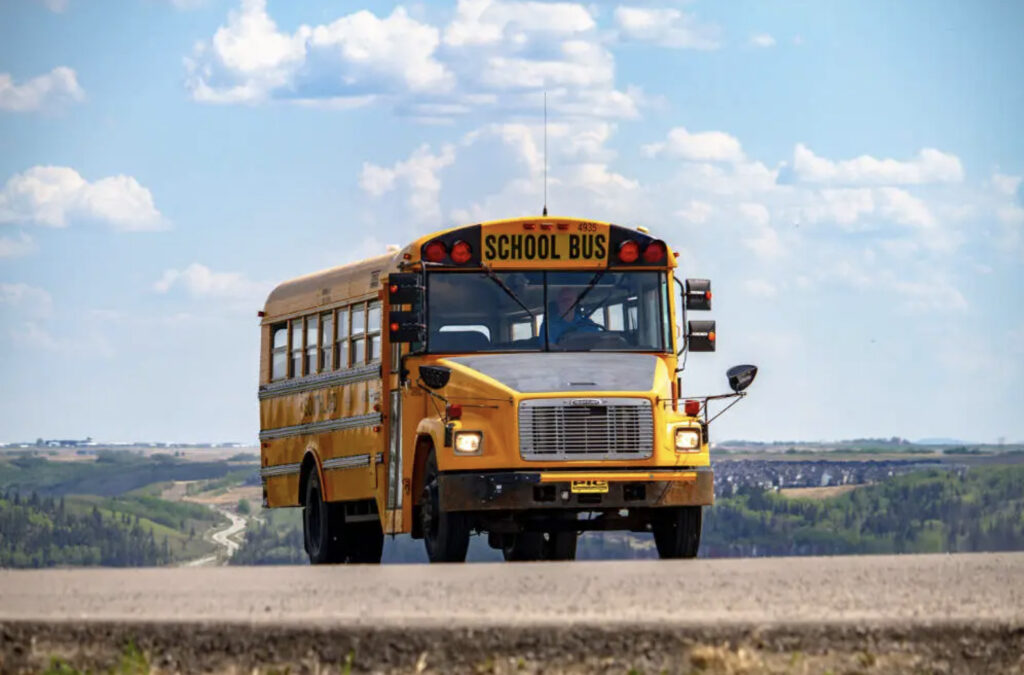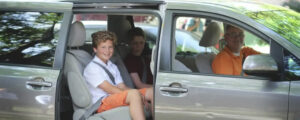
Once upon a time, children walked or biked to school. Then, children rode buses to school. Then, their parents started driving them to school individually. And, before we even realized it was happening, kids became sedentary, our commutes became congested, and our air became polluted.
Thankfully, we have started to realize the error of our ways and are making strides in turning back to a simpler time. State officials, school boards, parents, and students are looking for better, more environmentally friendly and sustainable modes of transportation to get to and from school. As much as we would like to snap our fingers and have the school transportation nightmare solved, it is going to take a lot of work. However, as you will see, the trends in kids’ transportation have us believing it is possible.
Encouraging Active Transportation
Childhood obesity has led to numerous studies that support active transportation, such as the study of Swiss school children ages 6-14. In this study, researchers encouraged children to walk or bike to school. They concluded that policymakers should support programs that boost active transportation, and safe bike lanes, and encourage families to attend schools within walking distance. In the US, there are similar programs that encourage kids to use active transportation such as the Safe Routes to School Partnership and the White House “Complete Streets” Policy.
Replacing Yellow School Buses
Since the yellow school buses of yesteryear are not meeting the demands of today’s schools, some cities have done away with them and replaced them. For instance, Denver Public Schools introduced the Success Express, an innovative bus shuttle system, in 2011 to help get students to the schools of their choice.
Managing Transportation Demand
Arlington Public Schools employs an in-house TDM coordinator (Transportation Demand Management) who has the job of identifying and implementing TDM strategies. One such strategy is using the APS GO! program to help schools and parents find more sustainable transportation options.
Shifting Away from Solo Driving
With more parents driving their individual students to school, the traffic becomes unnecessarily congested. Instead, schools are encouraging parents to move away from solo driving by encouraging students to carpool. For example, several Denver schools participate in SchoolPool, which connects families in close proximity encouraging them to share in the responsibilities of getting the kids to school and back via carpooling, walking, biking, or riding the bus together.

Here at GoKid, we have created a happier, more efficient carpool solution for families and schools called GoKid Connect. Our program works by allowing parents to choose to carpool with other school families they know and trust.
Providing Incentives for Making Positive Transportation Choices
In addition to simply encouraging families to make better transportation choices, some schools are offering incentives. For example, Boulder Valley School District’s Trip Tracker program aims to encourage students and families to use alternatives to single family car transportation to BVSD schools. Students earn Trip Tracker Dollars, which can be used at various local businesses, for walking or biking to school.
Collaborating with Other Districts or Mass Transit Systems
Other areas of the country are collaborating with other districts offering intracity transportation options or working with the public transit systems in their community. Rather than each entity operating buses that are only half-filled, these types of collaborations mean fewer vehicles on the road and more options for students to get to schools in other areas. For instance, DC’s Student Transit Subsidy Program which allows students to ride public transit with free or reduced-fare passes and Medford, New Jersey’s shared district school buses.
Embracing Technology and Ride-Sharing Apps
Finally, there has been tremendous growth in the kids transportation industry regarding technology. For example, GoKid is designed to help alleviate some of the school transportation headaches by helping families create safe and efficient carpools with families they trust. By using the GoKid app to carpool, families have already saved 3+ million miles of driving. Plus, carpooling is safer than solo driving, and it is better for the environment!


